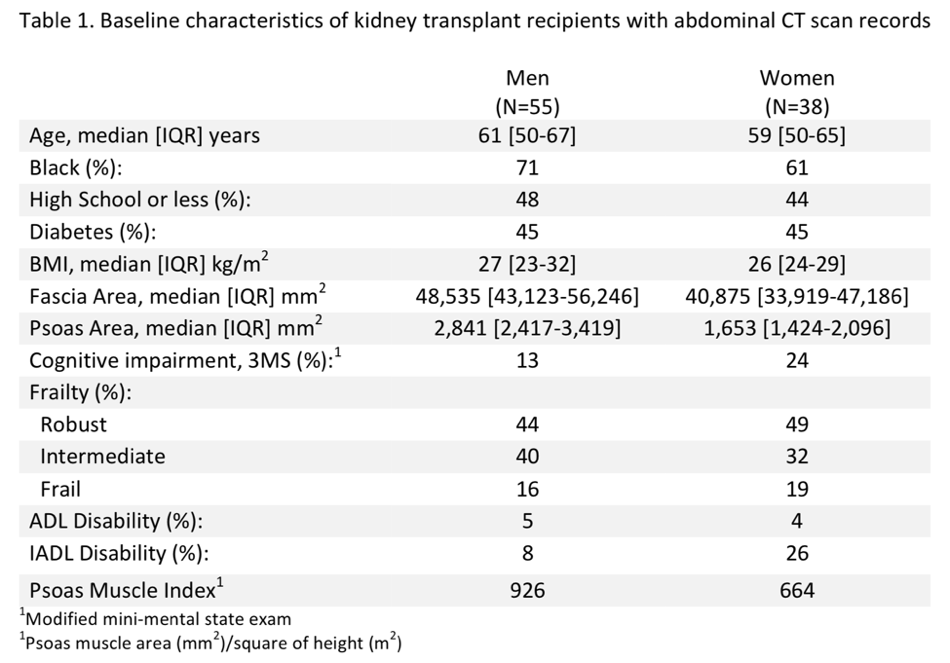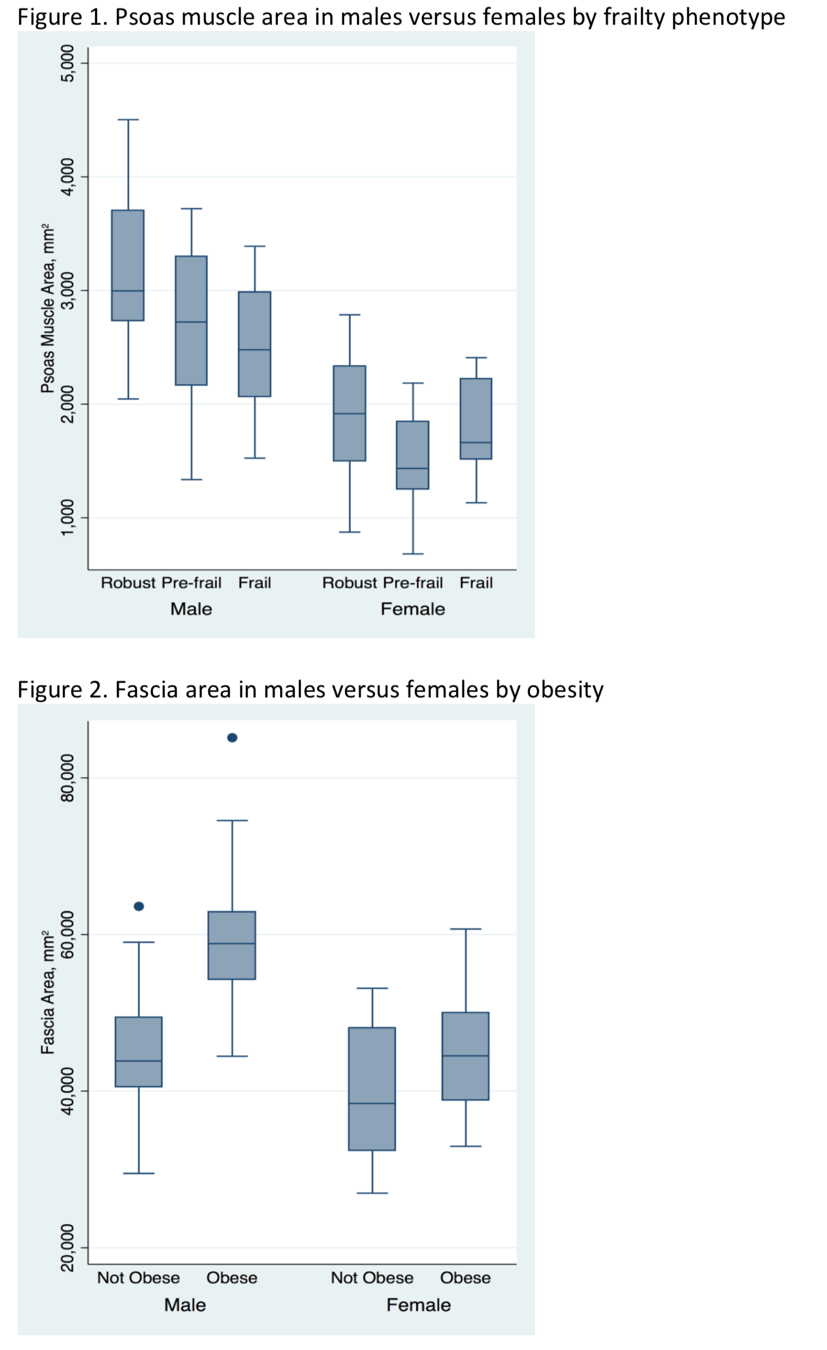Clinical, Aging, Morphometric Measures & Adverse Outcomes in Kidney Transplant Recipients
1JHU, Baltimore, MD, 2UM, Ann Habor, MI
Meeting: 2019 American Transplant Congress
Abstract number: A141
Keywords: Age factors, Elderly patients, High-risk
Session Information
Session Name: Poster Session A: Biomarkers, Immune Monitoring and Outcomes
Session Type: Poster Session
Date: Saturday, June 1, 2019
Session Time: 5:30pm-7:30pm
 Presentation Time: 5:30pm-7:30pm
Presentation Time: 5:30pm-7:30pm
Location: Hall C & D
*Purpose: Sarcopenia is a hallmark of frailty, a geriatric phenotype which is common among kidney transplant (KT) candidates and recipients. Sarcopenic-obesity is a high-risk state that is associated with frailty and adverse outcomes. We used objective morphometric measures of sarcopenia and obesity and explored their associations with various post-KT outcomes.
*Methods: The cross-sectional area of the psoas muscle (a measure of sarcopenia) and visceral fascia (a measure of central obesity) were measured on CT scans of 93 KT recipients. We use multivariable logistic and negative binomial regression to describe the relationships between psoas and fascia area and clinical outcomes including delayed graft function, length of hospital stay, acute graft failure, quality of life, ADL/IADL disability, and mortality.
*Results: The median age for men and women was 61 and 59 years old, respectively. Psoas and fascia area were much higher in men than women (psoas: 2,841 vs. 1,653 mm2; fascia 48,535 vs. 40,875 mm2). Psoas muscle area decreased with age (-13.8mm2per year; p=0.005) and was significantly lower among the frail KT recipients (-388.9 mm2; p=0.02). By contrast, fascia area increased with age (248.1mm2per year; p=0.001) and was not significantly different by frailty status (-1,874.1 mm2; p=0.4). Psoas area and fascia area were both associated with delayed graft function in univariable analysis, but not with any other clinical outcome. After adjusting for sex, this association only remained significant for fascia area. Length of stay was not associated with either measure in univariable analysis, but it was associated with fascia area in the adjusted analysis that accounted for age, sex, and height (Table 2).
*Conclusions: Sarcopenia and obesity may convey distinct but useful risks for delayed graft function and prolonged hospital stay.
To cite this abstract in AMA style:
Muzaale A, Chu N, Ying H, Ross B, Segev D, McAdams-Demarco M. Clinical, Aging, Morphometric Measures & Adverse Outcomes in Kidney Transplant Recipients [abstract]. Am J Transplant. 2019; 19 (suppl 3). https://atcmeetingabstracts.com/abstract/clinical-aging-morphometric-measures-adverse-outcomes-in-kidney-transplant-recipients/. Accessed December 14, 2025.« Back to 2019 American Transplant Congress



